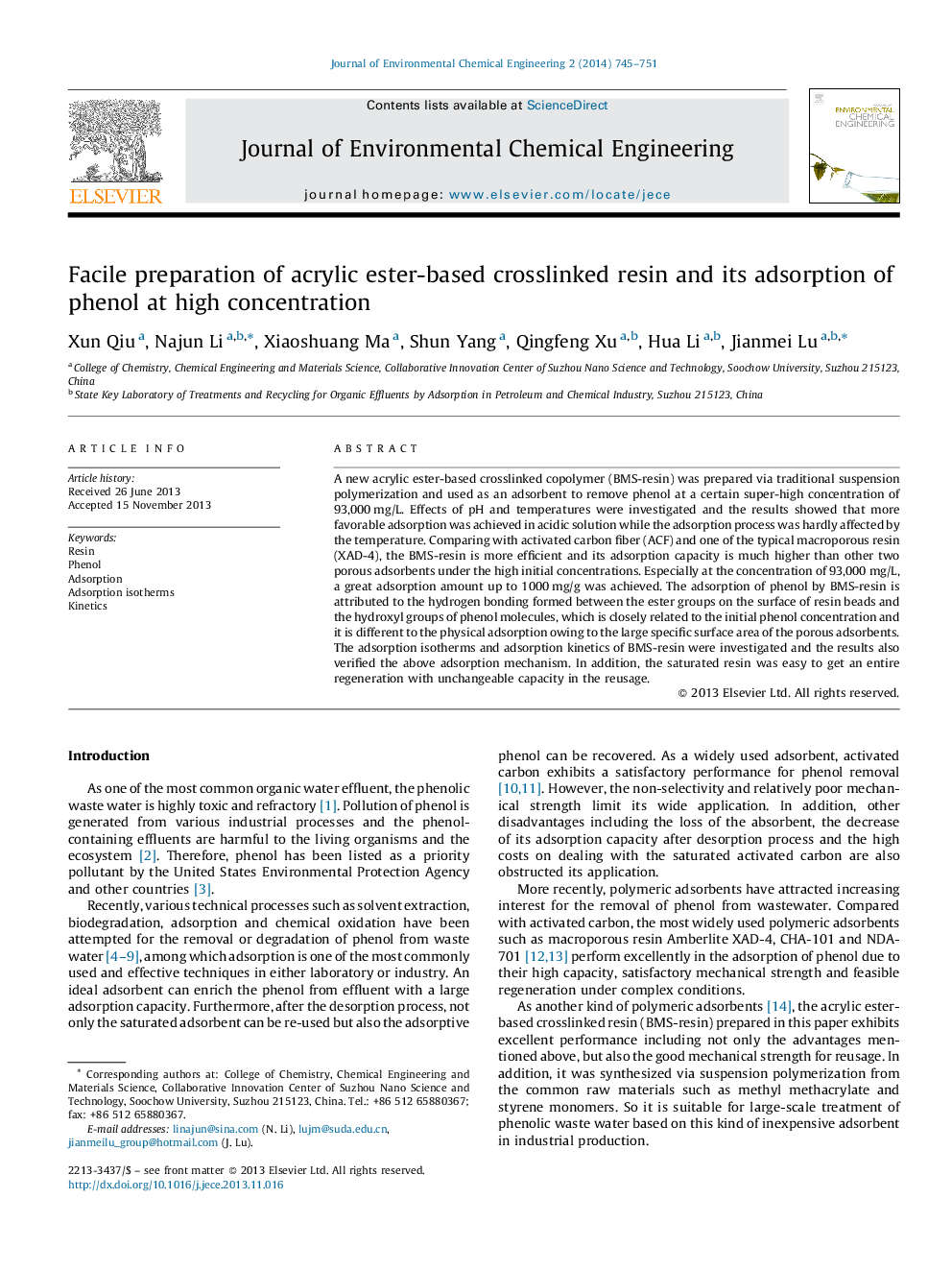| Article ID | Journal | Published Year | Pages | File Type |
|---|---|---|---|---|
| 222192 | Journal of Environmental Chemical Engineering | 2014 | 7 Pages |
•A new crosslinked resin was prepared for adsorption of phenol at high concentrations.•Its adsorption capacity is much higher than other two porous adsorbents.•A great adsorption amount up to 1000 mg/g was achieved at 93,000 mg/L.
A new acrylic ester-based crosslinked copolymer (BMS-resin) was prepared via traditional suspension polymerization and used as an adsorbent to remove phenol at a certain super-high concentration of 93,000 mg/L. Effects of pH and temperatures were investigated and the results showed that more favorable adsorption was achieved in acidic solution while the adsorption process was hardly affected by the temperature. Comparing with activated carbon fiber (ACF) and one of the typical macroporous resin (XAD-4), the BMS-resin is more efficient and its adsorption capacity is much higher than other two porous adsorbents under the high initial concentrations. Especially at the concentration of 93,000 mg/L, a great adsorption amount up to 1000 mg/g was achieved. The adsorption of phenol by BMS-resin is attributed to the hydrogen bonding formed between the ester groups on the surface of resin beads and the hydroxyl groups of phenol molecules, which is closely related to the initial phenol concentration and it is different to the physical adsorption owing to the large specific surface area of the porous adsorbents. The adsorption isotherms and adsorption kinetics of BMS-resin were investigated and the results also verified the above adsorption mechanism. In addition, the saturated resin was easy to get an entire regeneration with unchangeable capacity in the reusage.
Graphical abstractThe acrylic ester-based crosslinked BMS-resin is more efficient and its adsorption capacity is much higher than other two porous adsorbents at the high initial concentrations (>10,000 mg/L) of phenol. The adsorption of phenol by BMS-resin is attributed to the hydrogen bonding formed between the ester groups on the surface of resin beads and the hydroxyl groups of phenol molecules, which is closely related to the initial phenol concentration and it is different to the physical adsorption owing to the large specific surface area of the porous adsorbents.Figure optionsDownload full-size imageDownload as PowerPoint slide
